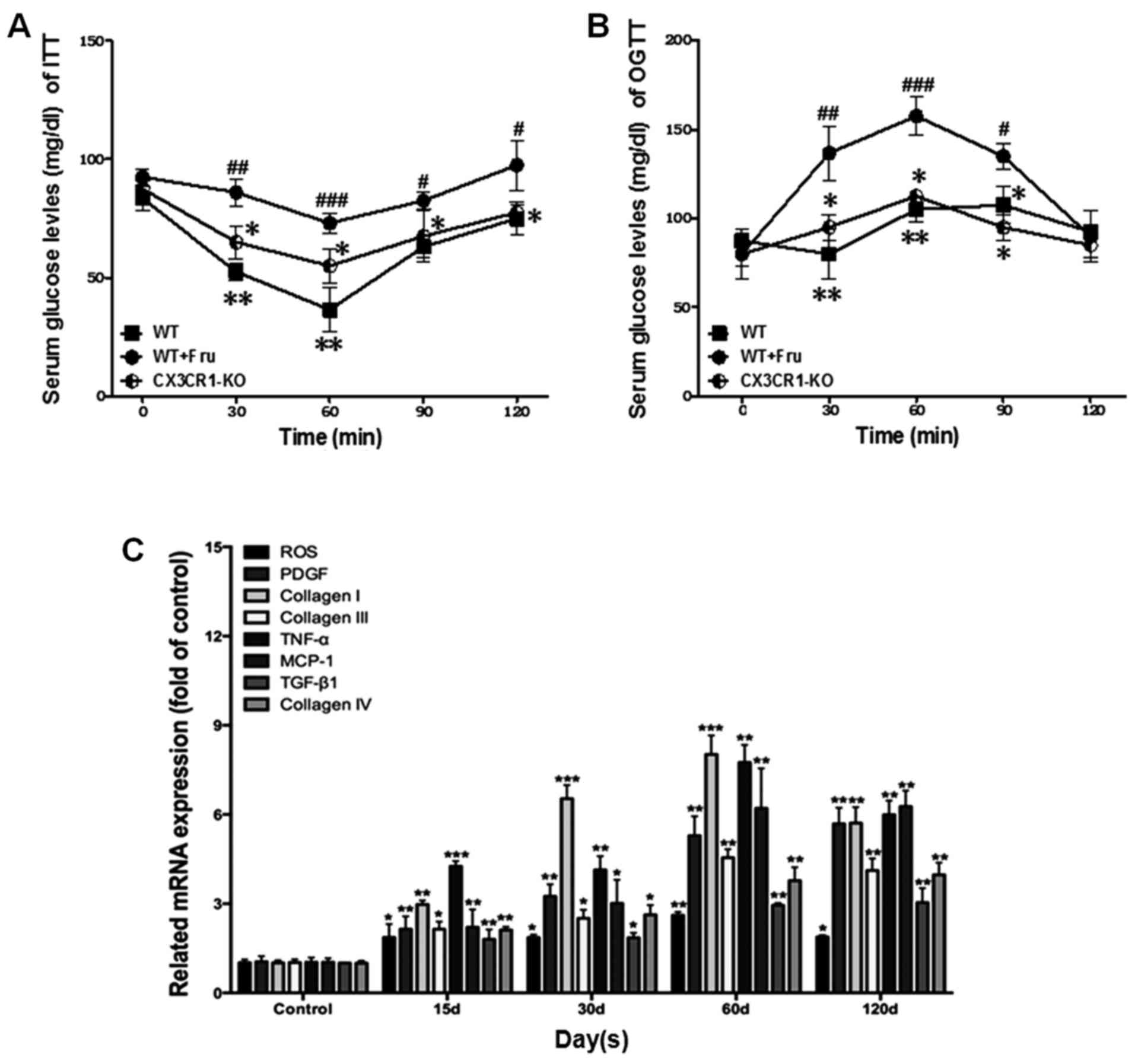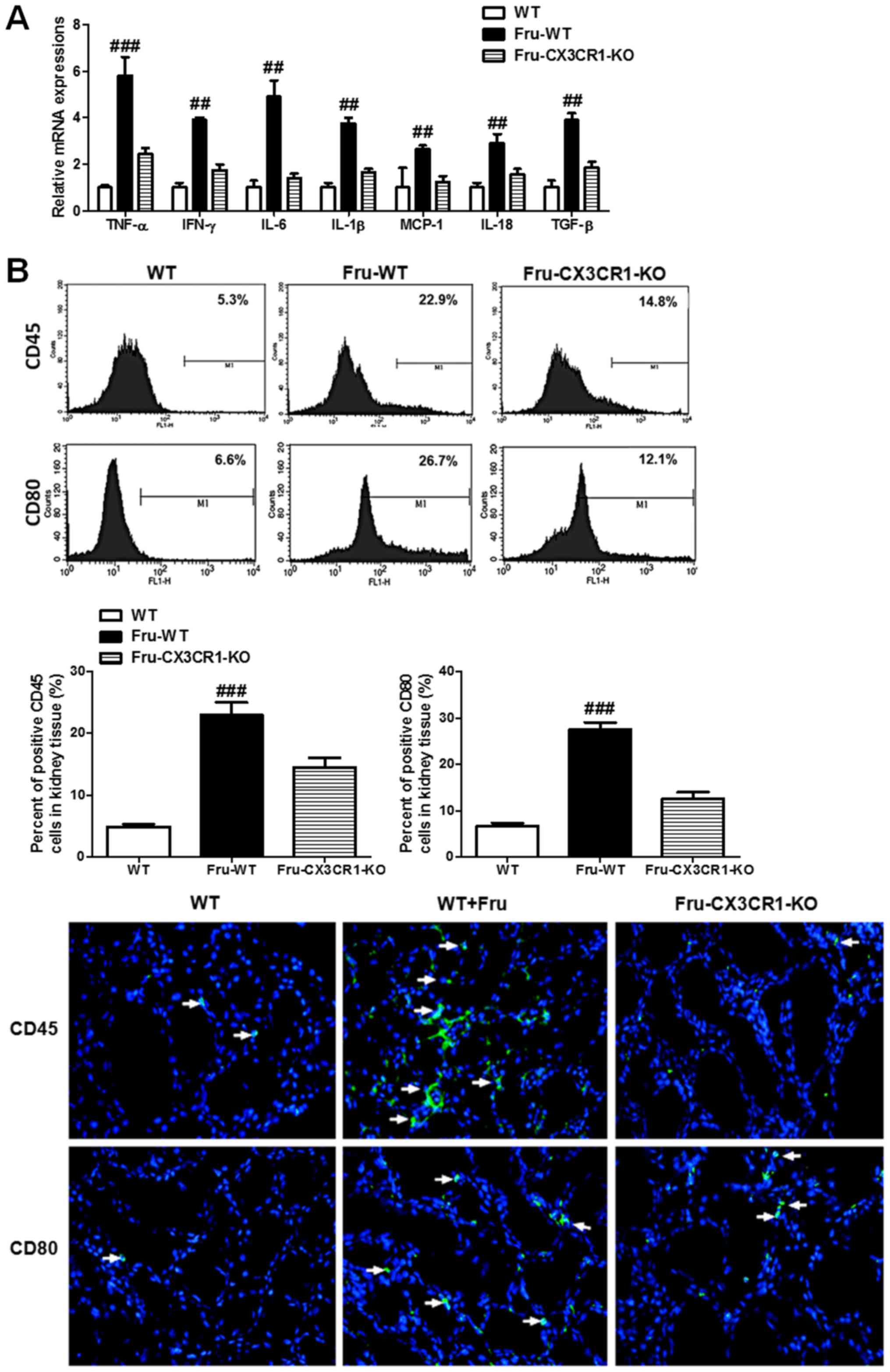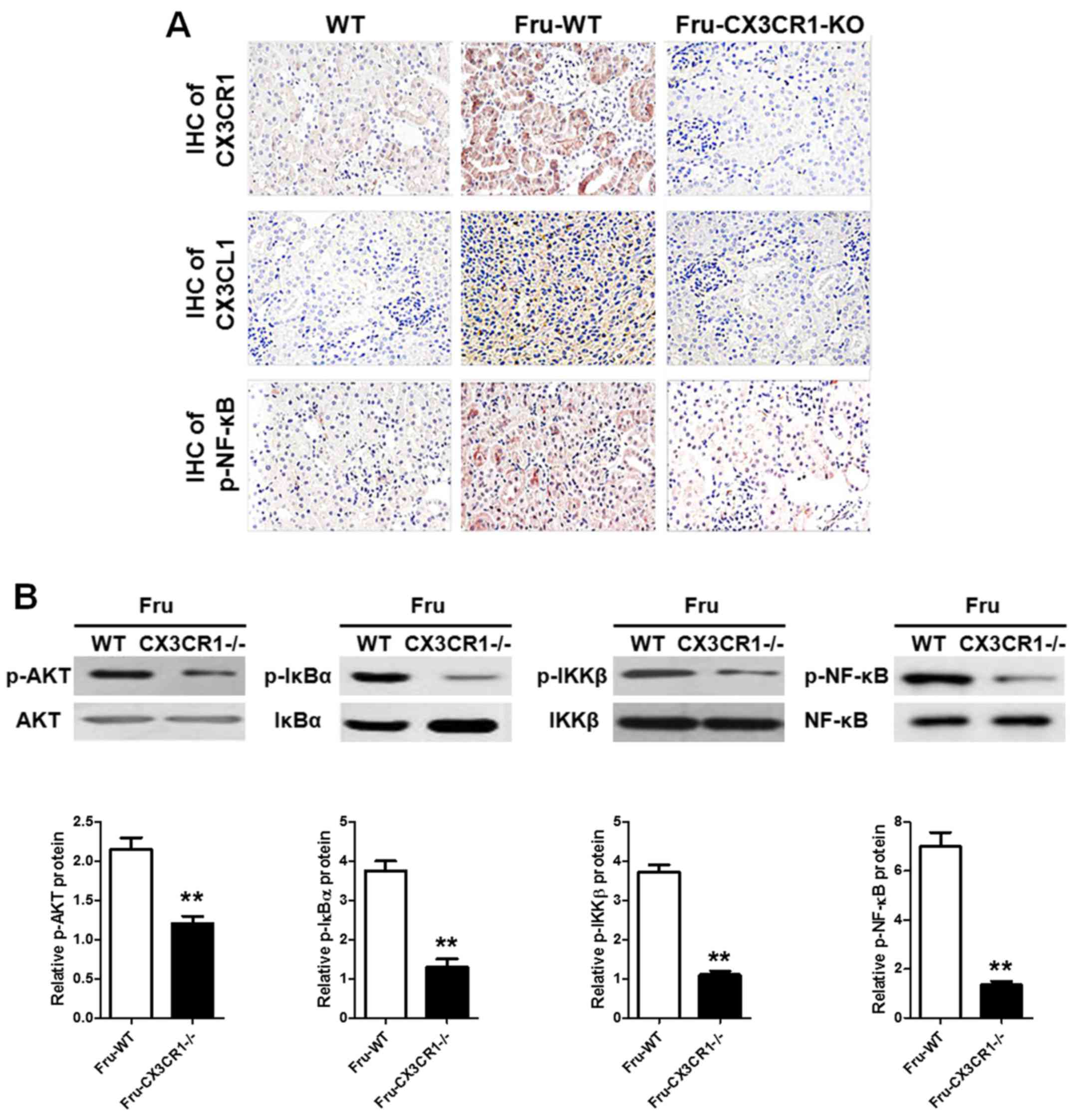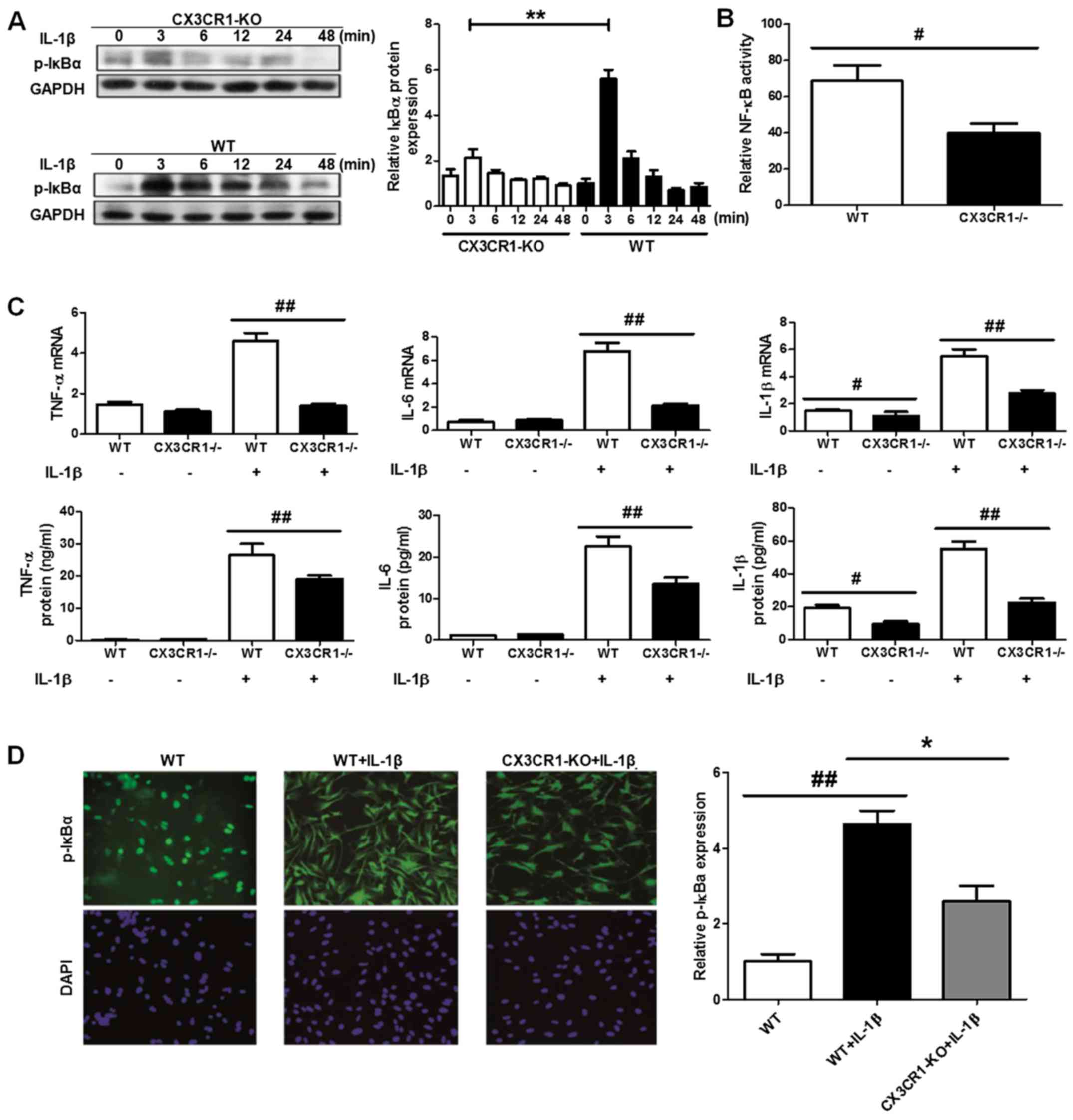The deficiency of CX3CL1/CX3CR1 system ameliorates high fructose diet-induced kidney injury by regulating NF-κB pathways in CX3CR1-knock out mice
- Authors:
- Published online on: March 16, 2018 https://doi.org/10.3892/ijmm.2018.3573
- Pages: 3577-3585
-
Copyright: © Yu et al. This is an open access article distributed under the terms of Creative Commons Attribution License.
Metrics: Total
Views: 0 (Spandidos Publications: | PMC Statistics: )
Total PDF Downloads: 0 (Spandidos Publications: | PMC Statistics: )
Abstract
Fructose, the most important functional food additive from the last century, has been widely used in industry, agriculture, light industry, food and medicine. With the improvement of people's living standard and economic level, excess intake of fructose results in metabolic symptoms, including hyperleptinemia, insulin resistance and neuroinflammation is causing high risk of chronic kidney disease development in humans and animals. However, the underlying molecular mechanism of renal injury is still not fully understood, and the development of effective drugs and treatments are delayed. Hence, we investigated the role of crosstalk of CX3CL1-CX3CR1 axis and nuclear factor-κB (NF-κB) signaling pathway in the development of renal injury. CX3CL1-knock-out C57BL/6 mice were constructed and used to analyze the influence of CX3CL1-related signaling pathways on kidney injury of wild‑type (WT) mice and CXECR1 deficiency mice, which were administrated with 30% fructose water. Western blotting, quantitative RT-PCR (qRT-PCR), immunohistochemistry, ELISA, flow cytometry and biochemical indicator analysis were used to determine the levels of renal injury and key signaling pathway associated with renal damage. The results indicated that administration of high fructose intake can cause typical renal inflammatory responses in serum and tissues. Fructose enhances the CX3CL1-CX3CR1 axis and NF-κB activation, and promotes crosstalk of CX3CL1-CX3CR1 and NF-κB pathways. The phosphorylated AKT could be significantly activated in fructose-induced renal injury via CX3CL1-CX3CR1 axis. CX3CR1 expression between WT and CX3CR1-/- mice were evaluated to establish their relationship with injury. Our results indicated that CX3CR1 may be the central and major indicator in the process of renal injury, which mediate AKT pathway and further enhance the NF-κB activation. These findings demonstrated that crosstalk of CX3CL1-CX3CR1 axis and NF-κB signaling pathway play a direct role in fructose-induced kidney injury. Inhibition of CX3CL1-CX3CR1 pathway may suppress renal-related diseases. It may be a potential treatment choice for the clinical diagnoses and treatment in the future.














